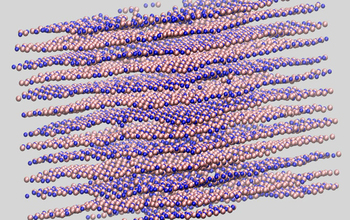Multimedia Gallery
Microstructure model of radiation-damaged hexagonal boron nitride
Rice University researchers used a microstructure model of radiation-damaged hexagonal boron nitride to study the benefits of deep learning techniques in simulating 2D materials to understand their characteristics.
[Research supported by National Science Foundation grants OAC 09-59097 and DMR 17-09051.]
Learn more about this research in the Rice news story 'Deep learning' casts wide net for novel 2D materials. (Date image taken: April 2019; date originally posted to NSF Multimedia Gallery: Oct. 2, 2019)
Credit: Prabhas Hundi/Rice University
Images and other media in the National Science Foundation Multimedia Gallery are available for use in print and electronic material by NSF employees, members of the media, university staff, teachers and the general public. All media in the gallery are intended for personal, educational and nonprofit/non-commercial use only.
Images credited to the National Science Foundation, a federal agency, are in the public domain. The images were created by employees of the United States Government as part of their official duties or prepared by contractors as "works for hire" for NSF. You may freely use NSF-credited images and, at your discretion, credit NSF with a "Courtesy: National Science Foundation" notation.
Additional information about general usage can be found in Conditions.
Also Available:
Download the high-resolution JPG version of the image. (852.4 KB)
Use your mouse to right-click (Mac users may need to Ctrl-click) the link above and choose the option that will save the file or target to your computer.

